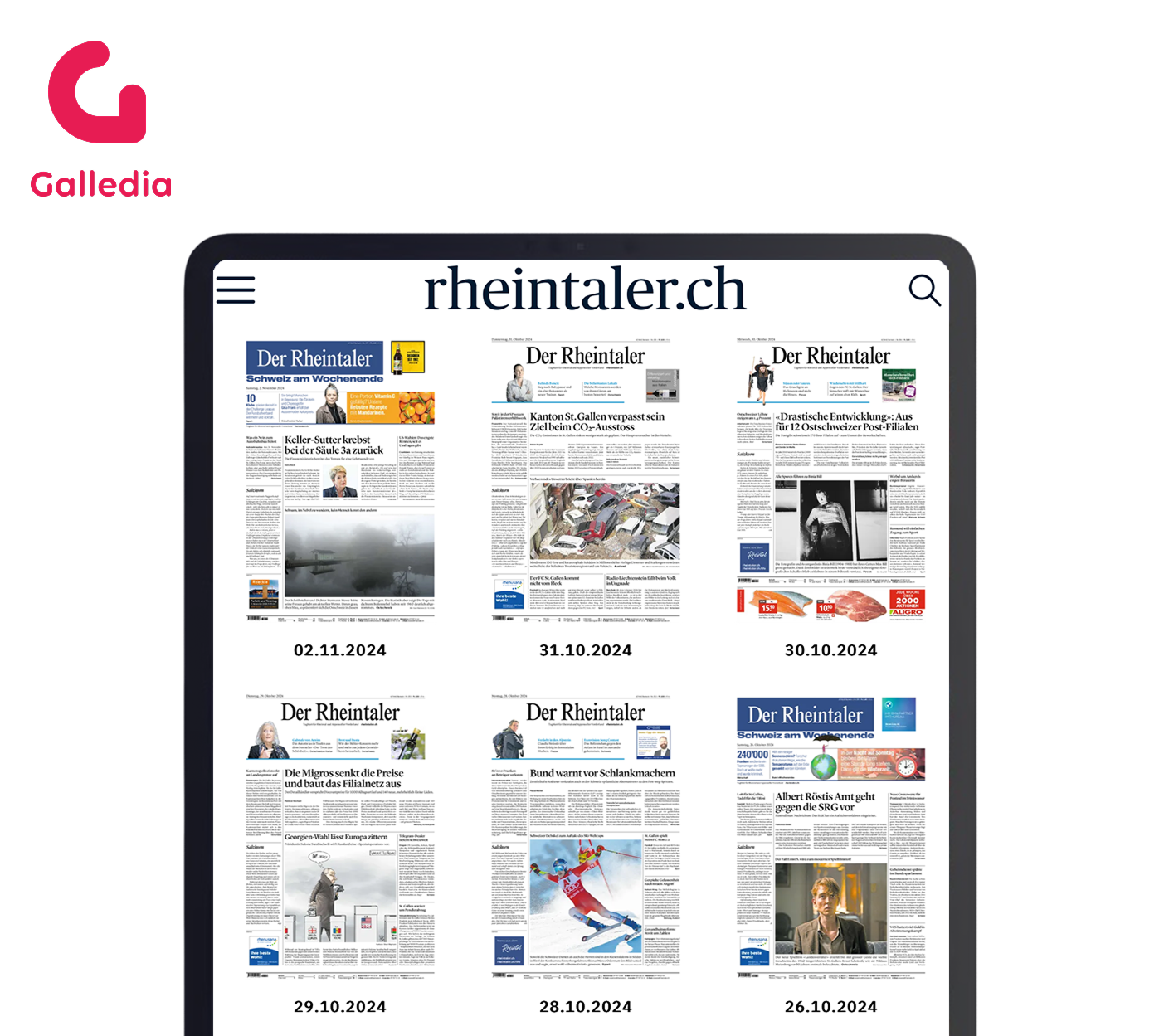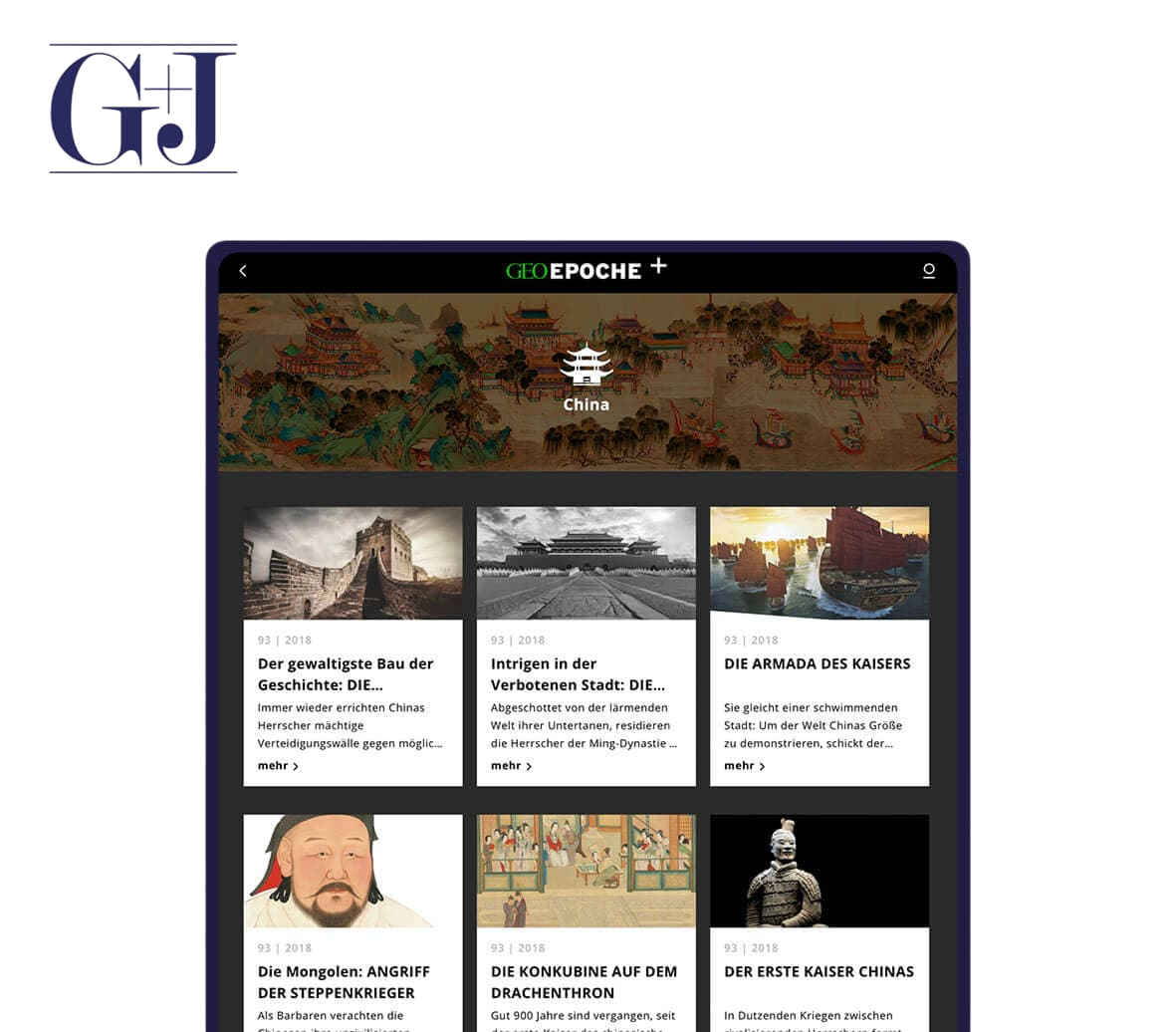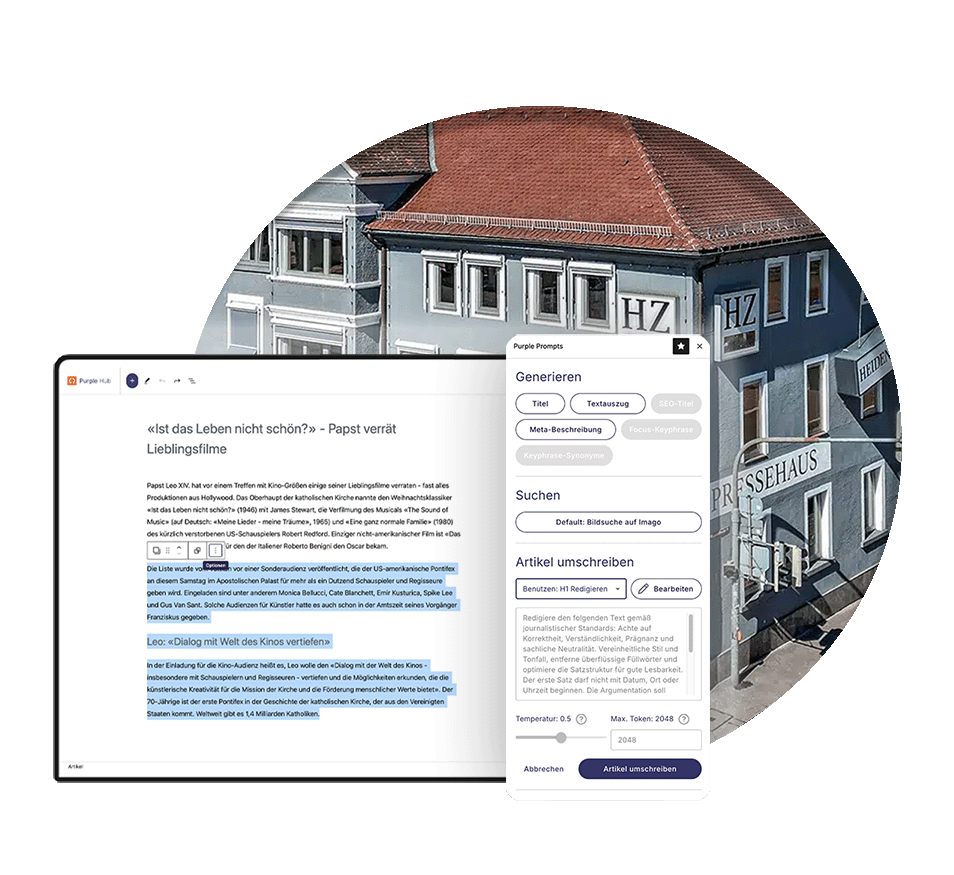
12 Automated Prompts: How Heidenheimer Zeitung Uses AI to Create More Time for Real Journalism
12
30
100%
About Heidenheimer Zeitung
Heidenheimer Zeitung is a regional daily newspaper that is published together with Heidenheimer Neue Presse in the Heidenheim district. The combined circulation is 20,809 copies. As an independent partner in the Südwest Presse network, HZ uses Purple's CMS for its news portal and hybrid news app with e-paper functionality.
PRODUCTs



Approximately 30 editors at Heidenheimer Zeitung use Purple daily for their journalistic work. For some time now, they have also been working with integrated AI functions. With Purple's Prompts feature, the editorial team has found a way to automate time-consuming routine tasks while maintaining editorial control and data security. The integration of AI-supported workflows directly in the editor enables HZ to strategically focus its personnel resources on original reporting.
The Challenge: Increasing Efficiency Without Compromising Data Protection and Quality
- Increasing efficiency in processing third-party texts (club reports, event announcements, etc.)
- Data protection-compliant AI usage without external systems
- Consistent standards in text editing across the entire editorial team
- Time savings for recurring tasks such as text shortening, formatting, and sports results lists
- No additional systems to avoid media disruptions
Personnel resources are becoming scarcer, qualified new talent is difficult to find, and at the same time, the pressure to work efficiently is increasing. "We need to organize ourselves efficiently and make sure that we make efficient progress with the resources available to us," explains Silja Kummer, Editor-in-Chief of Heidenheimer Zeitung.
Some editors had already begun exploring AI tools on their own initiative, primarily for processing third-party texts. The editorial team receives daily event announcements from organizers, club reports, and texts from freelance contributors with varying levels of journalistic expertise. "We frequently need to intervene significantly in these third-party texts," says Kummer. However, the use of external AI services such as ChatGPT raised data protection questions. The publishing management did not want content to end up in external systems where it was unclear who had access to it.
The editorial team initially evaluated third-party provider solutions but ultimately rejected them. "We didn't want yet another additional system. We already have a print system, an online system, an image archive, and so on," Kummer explains the decision. Additionally, the prompts offered by many providers could not be flexibly adapted to their specific needs.
The Solution: AI Integration Without System Change
- Activation of Purple Prompts in the existing editor for seamless workflows
- Development of 12 individual prompts, including 6 customized editing prompts
- Data protection-compliant AI usage via OpenAI and Anthropic API without data sharing
- Rapid implementation by a three-person editorial working group
- Flexible prompt adaptation for different text types and lengths
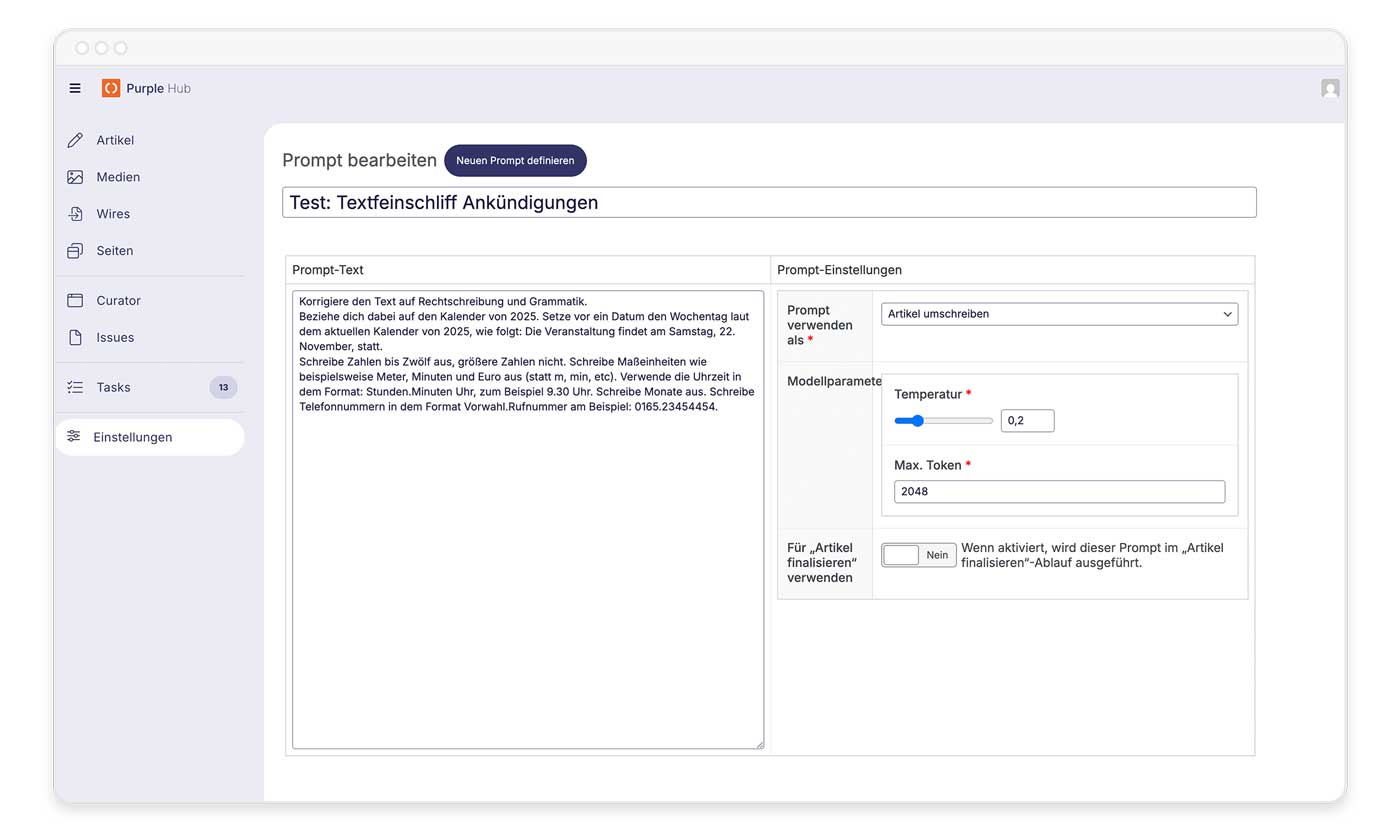
Since Heidenheimer Zeitung was already using Purple as its CMS, the Purple Prompts feature could simply be activated. "For us, the capabilities of Purple are excellent. It's possible to simply write your own prompts and give them a name. Then every editor can use them and we have a consistent framework," Kummer explains.
The implementation was conducted pragmatically. A working group of three people, including Kummer herself, developed the initial prompts. The group first tested the prompts in other AI systems as well, optimized them, and then finalized the versions. One of the colleagues entered the finished prompts directly into Purple.
A critical factor was the correct temperature setting for the prompts. "Because when the AI becomes too creative, it starts writing strange things. We naturally want to avoid that," Kummer explains. For news texts, where factual neutrality and journalistic standards are paramount, the AI's creativity must be deliberately kept low.
The editorial team developed customized prompts for various print formats: H1 texts for major lead stories with 2,800 to 3,200 characters, special H1 author texts for careful editing that preserves the individual style of freelance contributors, H2 texts for shorter articles, and footer box texts for news briefs with exact line specifications. Additionally, there are online-specific prompts for police blotter notices and hyperlinks, plus a particular innovation: a prompt for sports results lists that automatically converts structured data from competitions into reader-friendly texts.
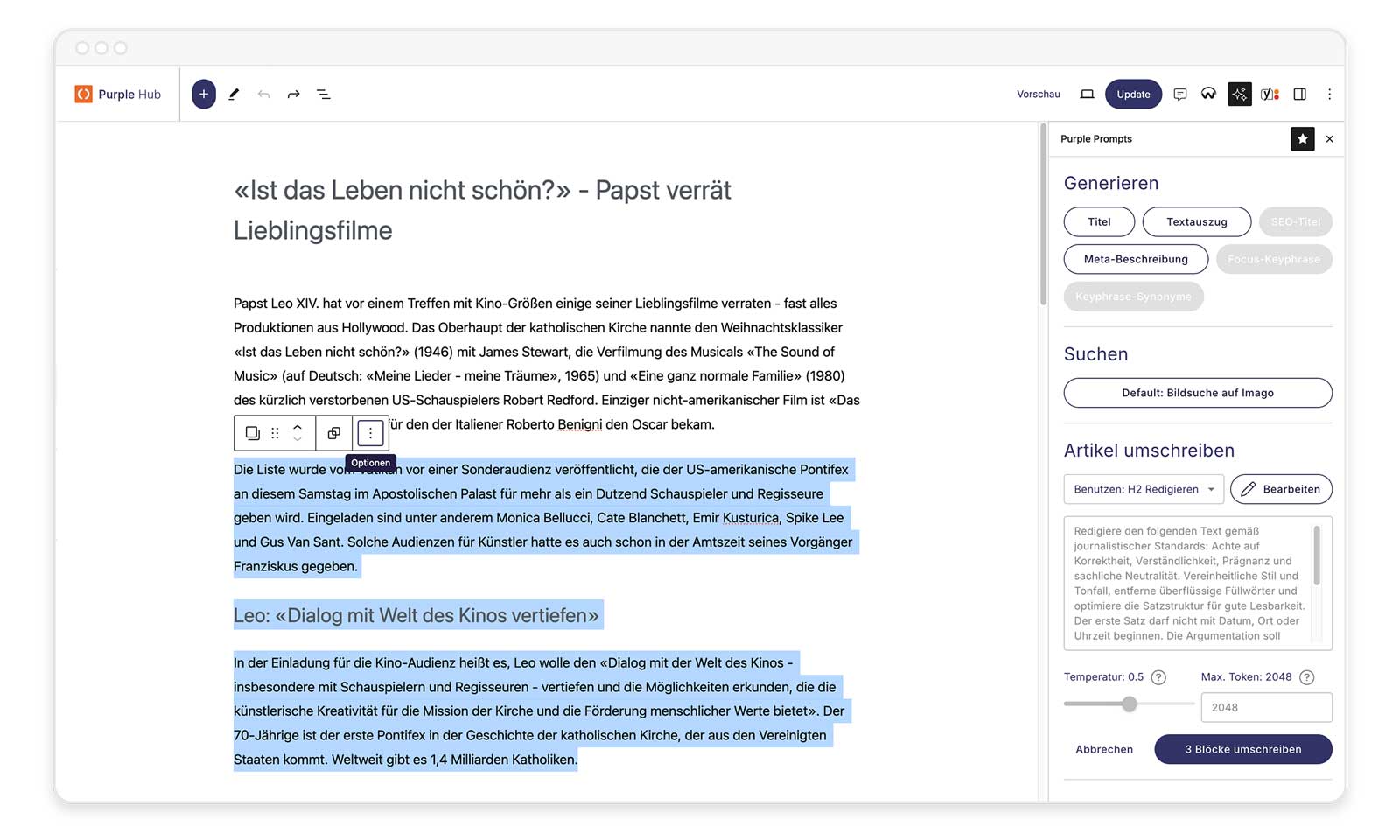
The Result: Noticeable Time Savings With Full Editorial Control
The implementation of Purple Prompts is already showing initial measurable success. The time savings are particularly evident with structured content: results lists from city races with 400 participants can now be converted into publication-ready texts in seconds, a task that previously took hours. "It often simply helps me time-wise," Kummer confirms. She herself uses the H2 editing prompt particularly frequently for medium-length texts, where manual editing would require considerable effort.
An important success factor is the transparent representation of AI editing. Purple Prompts displays in comparison mode for rewriting prompts which passages were adopted, changed, or newly generated. "You can't blindly trust the tool and just say, yes, go ahead," Kummer emphasizes. Editorial control is maintained at all times. "If I let the AI rewrite something wildly, then the club calls me and says, what have you done with our text, there's now nonsense in it. That must never happen, of course."
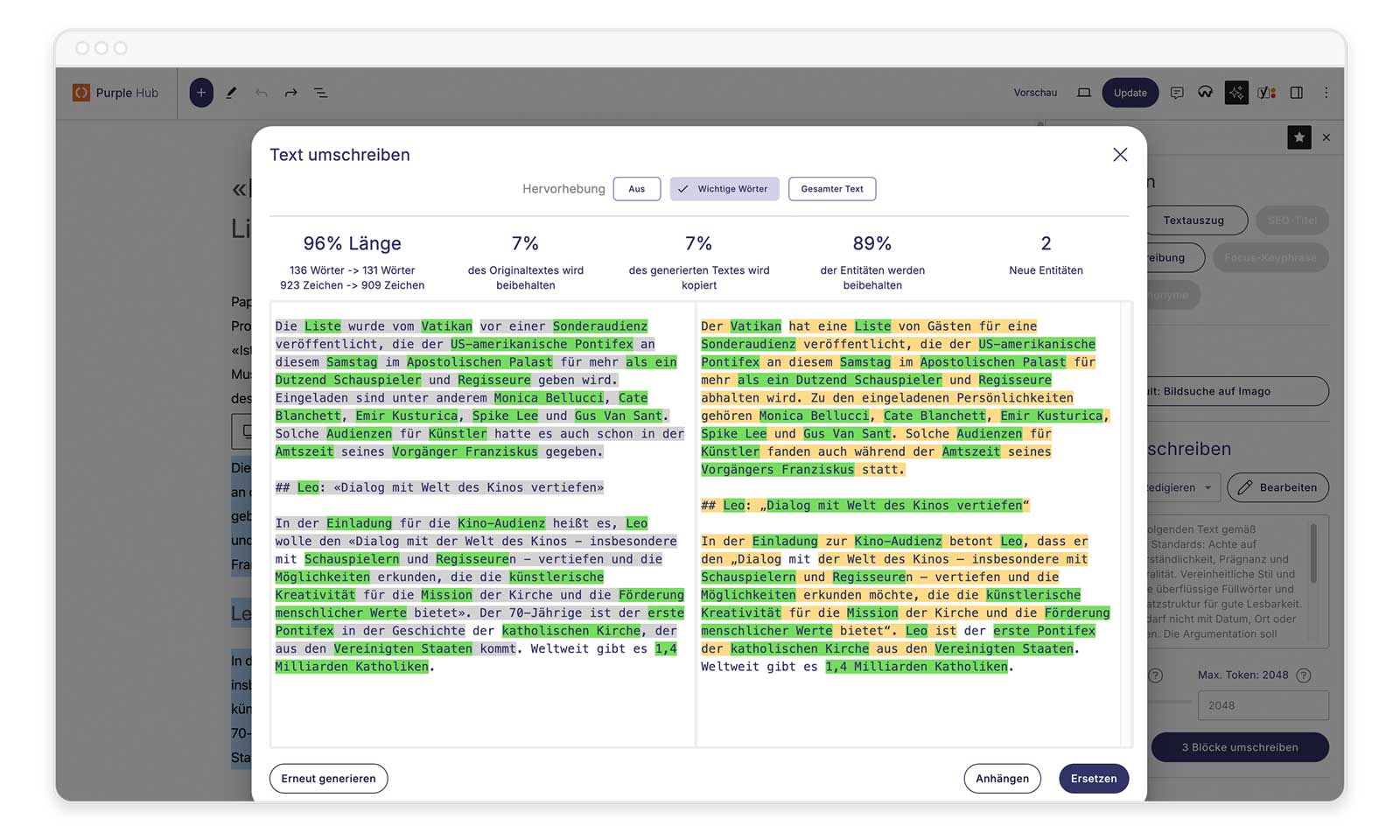
The editorial team is currently still in the adoption phase. Not all colleagues are using the new functions regularly yet, which Kummer sees as a normal development: "The most important thing is to start working with it. You simply have to get used to it."
The experience gained so far has also led to important insights: very short texts don't work well with AI support; manual editing is faster in those cases. And feedback from the editorial team helps with the ongoing optimization of the prompts.
The Outlook: From Initial Success to Permanent Workflows
Heidenheimer Zeitung views Purple Prompts as the entry point to a longer-term development. "The prompts don't have to be final and it doesn't have to be the entire AI application that we enable right away. Other things can come along as well," Kummer looks ahead.
In the coming months, the primary focus will be on complete adoption throughout the editorial team. At the same time, the working group will evaluate feedback and continuously refine the prompts. New use cases have already been identified: automated transcription of interview recordings is on the wish list, for example.
Purple is continuously developing its AI functions. In addition to existing capabilities such as Purple Ingest for the automated processing of agency reports, Purple is working on more comprehensive workflow solutions. With Purple Workflows, publishers can already build their own AI-supported processes, for example for automatic topic discovery, intelligent inbox management, or fact-checking routines. The workflows can be connected to external tools such as N8N via webhooks, enabling editorial teams to develop individual automation solutions. A community marketplace is also planned, through which publishers can share proven prompts and workflows with one another.
From a long-term perspective, Kummer sees AI support as indispensable, but the focus remains clear: "I want our editors to invest their time primarily in writing their own stories and spend less time editing club texts. AI is welcome to do that. If you would like to learn more about our collaboration with the Heidenheimer Zeitung, click here to read the detailed case study.
Success Stories
Don't believe us, believe our customers.






%201.svg)







